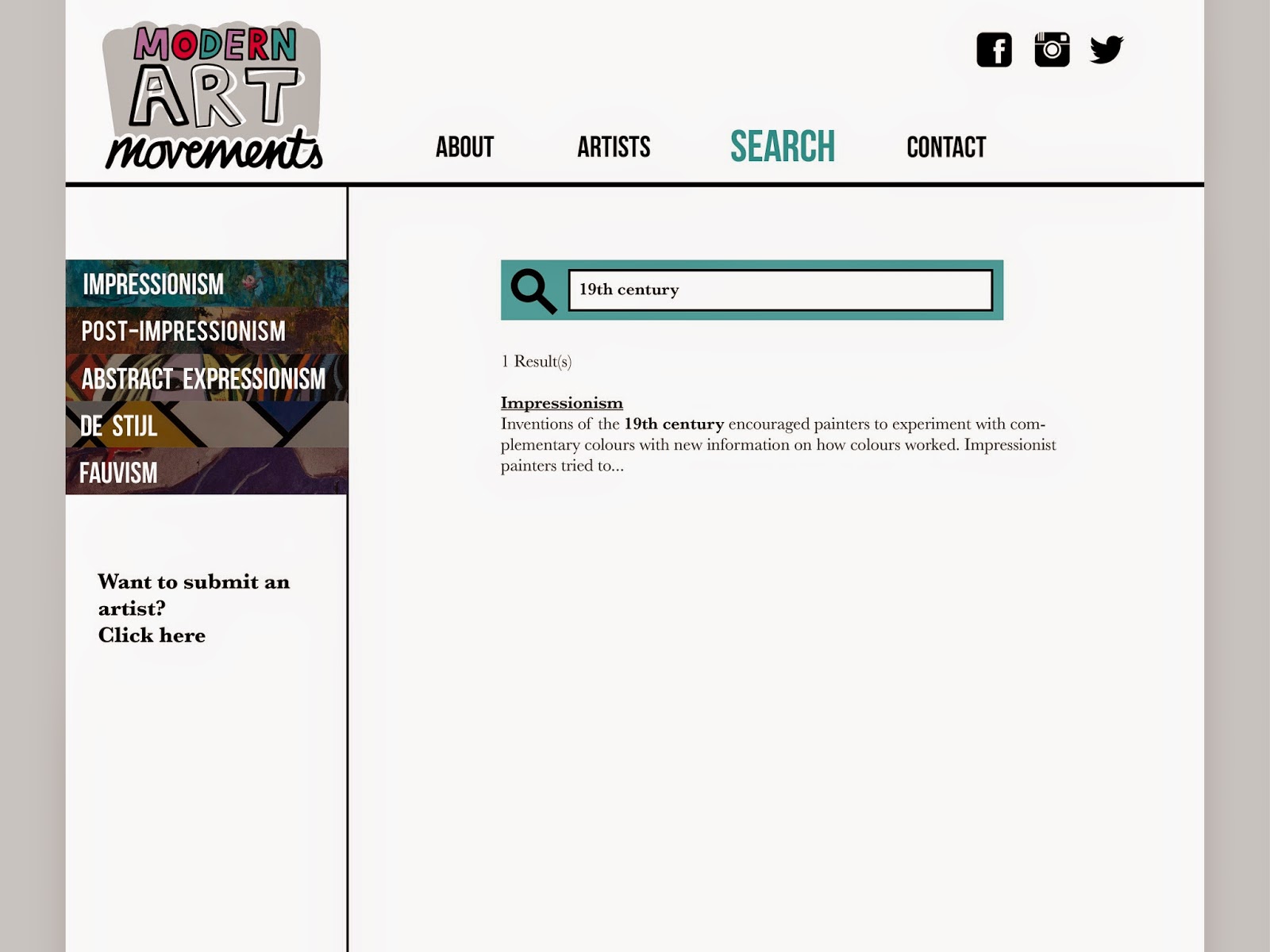I have started sketching logo ideas on illustrator using my graphics tablet. I want to create something that portrays art and creativity through a sketchy and hand-rendered medium. I'm unsure of the use of colour as of yet, but I want to use at least one bright colour, as the website is full of colourful and expressive paintings, so it seems suiting. Also, the target audience is young people, from teens upwards. To make this clear I need to show youthfulness, and not just 'art information here'.

- Here are some initial sketches, I'm thinking of making 'ART' reflective of making, and 'movements' more neutral.
- I've experimented putting layers of the word 'ART' on top of each other using outlines and clashing colours. Doing this can make the type border on scruffy, so its hard to get the balance of expressive yet clean.
- Many of my experiments look childish and a bit too colour clashing, like the blue with the pink.
- With the word 'movements', I've experimented with handwriting, as it is neat and expressive without being too heavy. However, a lot of it isn't neat enough and all of the place, and a little illegible.
- Sans serif fonts would possibly make the logo simpler and a nice balance, but I can't seem to find one that works well enough. The fonts I tried in order are Quicksand, Ostrich Sans, and Roboto Condensed. Quicksand is simplistic and minimal but the dotted pattern is distracted and clashes with the first half of the logo. The other fonts just don't look right with any of the 'art' sketches.

- I chose a certain sketch I did of the word 'ART' with overlaying letter outlines. With the black letters, I differed the thickness of the outlines in different places; the main body of the 'A' is 3px, whereas the counter is 1px.
- I like the unruliness and experimental feel this gives off.
- The brushstroke feel to the pink background is to reflect paint, although I am not sure what colour to choose for this.
- I experimented with different colours, but I think it depends on the design and colours used for the rest of the website. A nice bright colour would work well if I keep the web design simple and mostly white: for this I like the dark red... I think the royal blue is a little reminiscent of social media and is just generally overdone.
- The pale orangey yellow seems like a colour used to attract children which would be the wrong effect.
 |
| I distorted the letters to make them a little neater. |
I have decided to add 'modern' to the logo name, making it 'Modern art movements', which is a lot more precise and true to the information on my website.
I drew the letters for 'modern' by hand using a tablet to fit the rest of the logo. I warped the letters in illustrator so make them neat, but still kept the individual hand rendered feel.
I've experimented with colours randomly across the letters, as colour is needed to spice it up.
I think 3 colours is a bit too many, and there needs to be some kind of order in which it is used, instead of random letters as above.
I've experimented with the logo layout trying to find the best balance.
I made the hand drawn letters much neater and more legible in illustrator as seen above, making the logo more user friendly and clear.
I have experimented with different colours in hopes of giving the logo more life. I like the two on the right, as a mixture of colour and white in the 'modern' letters makes the word hard to read.
The blue mixed with red and green however, seems to also affect the readability, as the blue is too dark in comparison, therefore the lilac colour seems to be better to go with.


























































